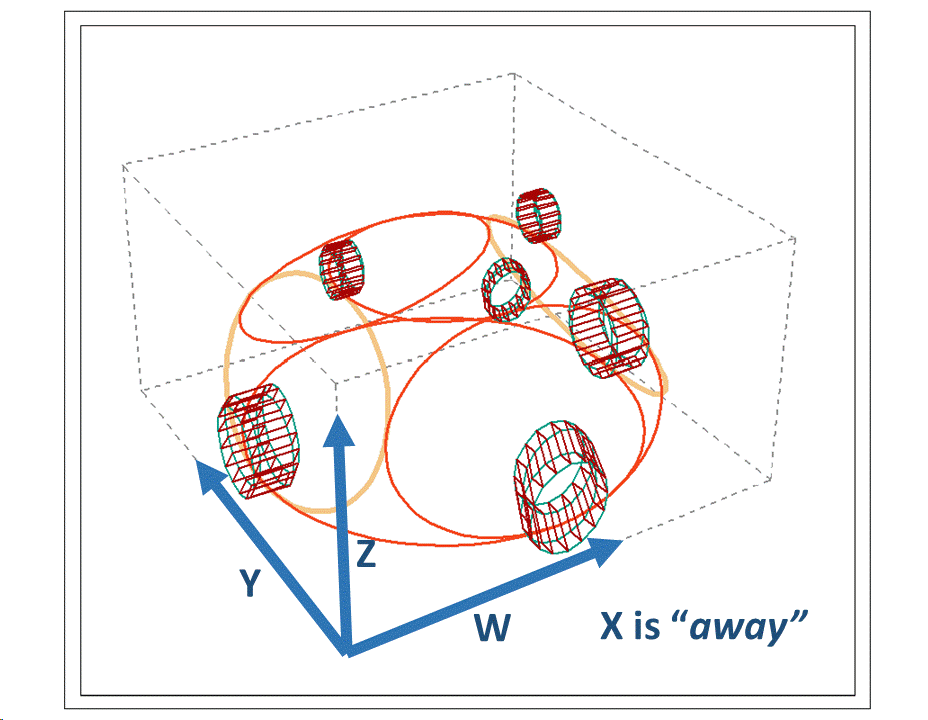Discussion--Show me a Picture!
Think about the problems that a 2D'er would have if she were looking at a 3D landscape drawing that we have helpfuly prepared as an introduction to our world.
And, consider the difficulty of viewing that drawing (let alone understanding it).
Looking (sideways) at our drawing, the 2D viewer might very well only see the picture's frame, or leaving off the frame, only the edges of every shape that we've drawn, the interiors being blocked from view. It's now clear that a complete view could only be possible if everything could somehow be made transparent, allowing her to perceive shading, shadows, and all the aspects of that drawing that allow us 3D folk to view into that drawing to infer what is happening away from the viewer, in the 3rd dimension.
A simple way to allow our 2D person to view the picture, though, might for us to draw only dots on the page, so that she could see around the dots to those "inside" and could, in a natural way, infer the lines that those dots implied, and then also the 2D forms that those lines contained.
You can probably see where this is going -- a line drawing to us is the 2D person's dotted drawing. In a natural way we infer not only the surfaces defined by these lines, but also the volumes implied by those surfaces. And what's more, we can easily see around the lines to what's behind. So 4D'ers might well do drawings like these to help us to see their world. They may not be able to do much more to help us understand it though--that would be on us.
---------
|


